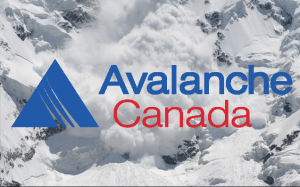 The areas that we ski and patrol at are some of the most spectacular in Canada. That also means we ski in avalanche terrain every day. Yes, even Nordic patrollers are not exempt.
The areas that we ski and patrol at are some of the most spectacular in Canada. That also means we ski in avalanche terrain every day. Yes, even Nordic patrollers are not exempt.
The avalanche risk we face every day (risk = exposure to hazard) is minimal as the avalanche hazard within a ski area is controlled. But, did you ever consider what you would do if confronted by an avalanche incident? These events are rare, but one never knows!
But, let’s digress for a moment. What is the role of CSP patrollers while on duty? In four words – education, avalanche control, and rescue. While not every one of these three tasks will apply to every resort, let’s explore what our roles are / could be / should be:
- Education – This involves educating the public as to current conditions (i.e., what the hazard is; what is open or closed; educating “poachers”).
- Avalanche Control – The CSP does not do avalanche control, but we do assist the ski resort’s control efforts. This may be as simple as blocking off areas while control work is in progress and letting the public know what is going on.
- Rescue – Patrollers can be competent members of the rescue team. At several resorts, it is encouraged and sometimes mandatory to carry avalanche gear, so is it not imperative to know how to use it?
The best way to be prepared and confident in our abilities on the slopes is to take an avalanche course. CSP Mountain Division organizes several avalanche courses throughout the winter season:
- Avalanche Skills Training (AST) 1 & 2
- Companion Rescue Skills (CRS)
The Rescue at Cherry Bowl
Avalanche safety and rescue require skills and practice. Can it make the difference?
 In March of 2013, four friends from Whitehorse, Yukon, made the 1200 km road trip south to Shames Mountain, BC. With fresh snow and clearing skies, they embarked on a week-long adventure exploring the area’s backcountry. Four days in, on a bluebird day in Cherry Bowl, their trip came to an abrupt end.
In March of 2013, four friends from Whitehorse, Yukon, made the 1200 km road trip south to Shames Mountain, BC. With fresh snow and clearing skies, they embarked on a week-long adventure exploring the area’s backcountry. Four days in, on a bluebird day in Cherry Bowl, their trip came to an abrupt end.
A massive avalanche hit the group of four skiers. When the slide stopped, three of them were deeply buried. The one person left on the surface had his pack swallowed by the snow, leaving him with no rescue equipment other than his transceiver. The chances of his friends’ survival were almost zero, yet all of them lived.
Explore what is now known as the Rescue at Cherry Bowl – the true story of how one trained group used their skills to successfully rescue the three people deeply buried in the avalanche.
Avalanche Skills Training (AST) 1
 Avalanche Skills Training (AST) 1 is the first step in your avalanche education. This two-day course is approximately 50% classroom and 50% field work. The AST 1 course provides an entry-level decision-making framework by covering the following topics:
Avalanche Skills Training (AST) 1 is the first step in your avalanche education. This two-day course is approximately 50% classroom and 50% field work. The AST 1 course provides an entry-level decision-making framework by covering the following topics:
- avalanche formation and release
- identification of avalanche terrain
- trip planning basics
- optimal use of tools and resources like the avalanche forecasts to mitigate your avalanche risk
- appropriate travel techniques in avalanche terrain
- intro to companion rescue
At the end of the AST 1, you should recognize that your journey is just starting and there is much, much, much more to learn.
Avalanche Skills Training (AST) 2
 Avalanche Skills Training (AST) 2 is a four-day course consisting of 25% classroom and 75% field work. Some touring experience is required. It takes everything you learned in the AST 1 and steps it up a notch, including:
Avalanche Skills Training (AST) 2 is a four-day course consisting of 25% classroom and 75% field work. Some touring experience is required. It takes everything you learned in the AST 1 and steps it up a notch, including:
- progressive planning and travel techniques required to travel safely through various types of terrain
- key techniques for using the Danger Rating on a local scale
- key techniques for applying the Avalanche Terrain Exposure Scale (ATES) technical model to develop personal, local terrain ratings
- how to proficiently carry out a companion rescue
Companion Rescue Skills (CRS)
 The Companion Rescue Skills (CRS) course can be used either as the first stepping stone to avalanche training or as a refresher for those who have previous training in either AST 1 or AST 2. At the end of the one-day course, students should be able to:
The Companion Rescue Skills (CRS) course can be used either as the first stepping stone to avalanche training or as a refresher for those who have previous training in either AST 1 or AST 2. At the end of the one-day course, students should be able to:
- consider and incorporate preventative measures
- prioritize actions if caught in an avalanche
- understand transceiver functions and hone your transceiver search skills
- further develop your probe and shovel techniques
- organize a group rescue
Avalanche Canada is the source for all Canadian avalanche information. From public avalanche bulletins, training course information, and outreach programs (especially to youth) to snowmobile specific topics, it is all accessible from this website. Check it out!
For any avalanche-related information, contact:
Ken Lukawy – ken.lukawy@skipatrol.ca
